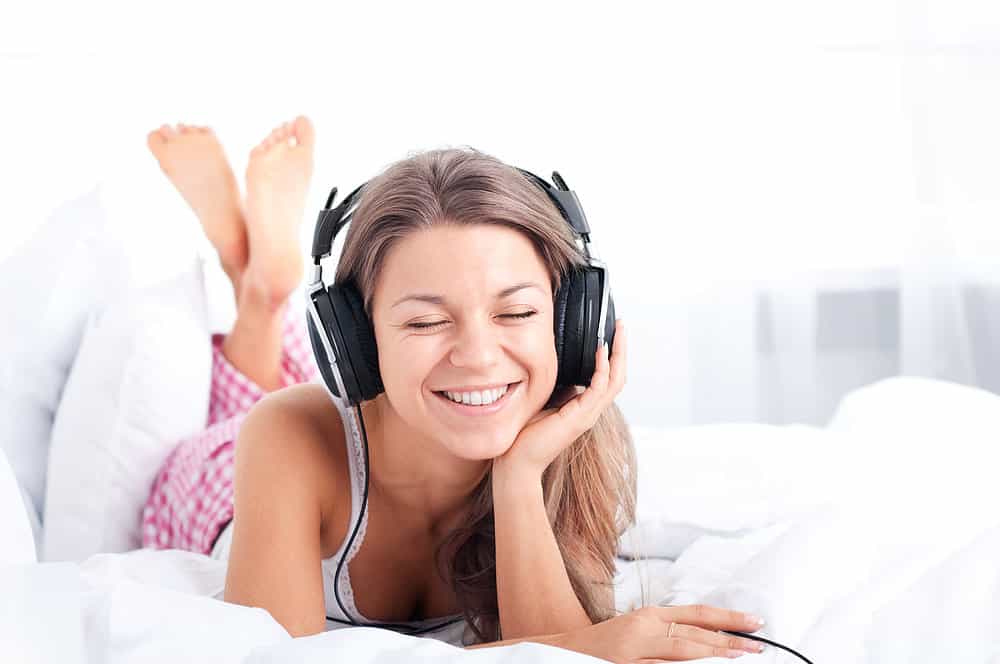COORDINATION, BALANCE, SENSORY MODULATION
Directly connected to the cochlea of the inner ear, the vestibular system is responsible for balance, coordination, muscle tone, rhythm and awareness of the body in space. It plays a key role in organizing motor output and posture. The vestibular system, along with proprioceptive inputs, also has a strong impact on attention and emotional regulation. Once these systems are functioning well, children are better able to participate in higher brain functions such as reading, writing and expressive language. iLs provides specific and comprehensive stimulation to the vestibular system through bone conduction delivered via headphones, balance board activities, and body movement exercises.
 CALM, SELF-REGULATION
CALM, SELF-REGULATION
The autonomic nervous system (ANS) controls many organs and muscles that work in an involuntary, reflexive manner. The ANS is important in 2 situations: emergencies that require us to “fight” or to take “flight” (the sympathetic SNS) and non-emergencies that allow us to “rest and digest” (the parasympathetic PNS). The iLs’ auditory program stimulates the parasympathetic system through the vagus nerve (afferent fibers on the eardrum and in the outer ear canal) which descends from the brain all the way to the intestinal tract. The vagus nerve influences our heart rate, sweating, mouth and throat muscles involved in speech, as well as our bowels and digestion. Many children and adults beginning iLs programs are in a state of hyper-arousal, not far from “fight or flight”. The gentle stimulation of the PNS brings about a balance of the ANS which is reflected by increased calm and self-regulation.
PROCESSING SENSORY, COGNITIVE & EMOTIONAL INFORMATION
The cerebellum is 10% of the weight of the brain but it has 50% of the brain’s neurons. In computer terms, the cerebellum is the processor, receiving input from sensory systems and various parts of the brain, and integrating these inputs to fine tune motor activity. Most neuroscientists agree that the cerebellum is involved in motor functions, cognitive functions such as attention and emotional functions such as regulating fear and pleasure responses. The iLs Playbook’s repetitive activities are designed to stimulate cerebellar function. Inputs from the visual, vestibular and auditory systems, session after session, train the cerebellum to become efficient at processing multi-sensory information.
AROUSAL, SLEEP PATTERNS
The Reticular Activating System (RAS) is a network of neurons deep in the brainstem that receives input from all sensory systems. It sends nonspecific information to the brain to “wake it up”. It is involved with regulating arousal and sleep-wake transitions, alertness, appropriate arousal to attend to the task at hand, and even prepares the motor system for action. The RAS is engaged through iLs’ multi-sensory training.
SENSE OF ONE’S BODY IN SPACE, MOTOR PLANNING, LEARNING
The sense of one’s own body — where it is, how to control it, how to move it — to the point where we don’t need to think about it, comes from the receptors in our joints and muscles and is referred to as proprioception. This is an often overlooked sensory system that contributes to behavior and the ability to learn. When this system is integrated with the other sensory systems, the brain is freed up to focus on higher order activities. Children and adults who improve their proprioceptive abilities are able to approach learning and communication tasks in a more relaxed and regulated manner. iLs’ movement program focuses on building proprioceptive abilities through specific, repetitive movement exercises.
 LISTENING, CLASSROOM PERFORMANCE, SOCIAL SUCCESS
LISTENING, CLASSROOM PERFORMANCE, SOCIAL SUCCESS
Decoding, phonemic awareness, listening in a noisy environment and speaking clearly require efficient processing and storage of information. iLs strives to maximize efficiency and accuracy of the auditory channel by providing carefully calibrated auditory stimulation to meet specific therapeutic objectives. The goal is to activate the neuronal connections in different areas of the brain through the auditory channel and ultimately train the ear and the brain to analyze and process sound more quickly and accurately. Air/bone conduction headphones are utilized in iLs programs to deliver unique and efficient stimulation of the auditory and vestibular systems.
READING, HAND/EYE COORDINATION
The subcortical visual motor system has direct neural connections to the auditory and vestibular systems. All three of these systems must work together for proper balance, coordination, reading and sound localization. iLs activates these systems with visual tracking and visual perception exercises in addition to auditory and vestibular system inputs.

 CALM, SELF-REGULATION
CALM, SELF-REGULATION LISTENING, CLASSROOM PERFORMANCE, SOCIAL SUCCESS
LISTENING, CLASSROOM PERFORMANCE, SOCIAL SUCCESS
 © 2025 Unyte Health US Inc.
© 2025 Unyte Health US Inc.